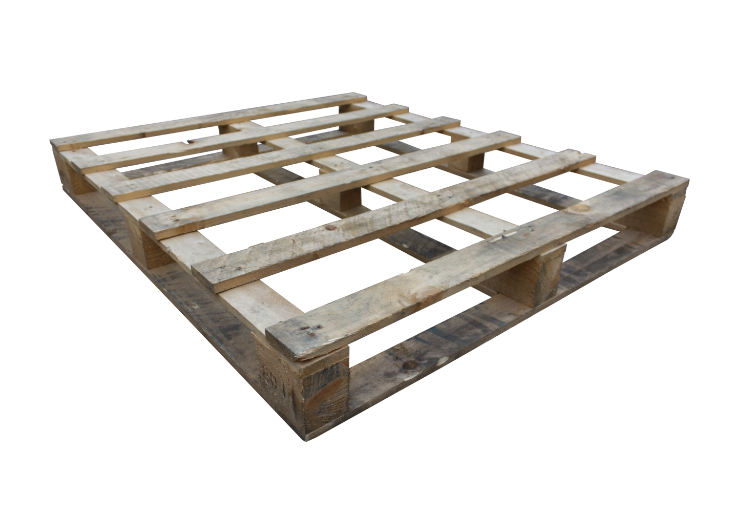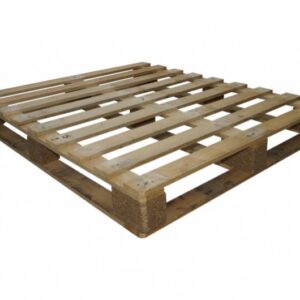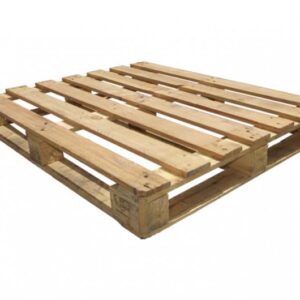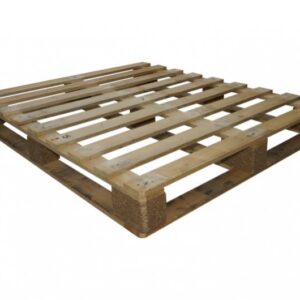Unpacking the Perimeter Pallet: Your Guide to the Grade C 1200x1000mm Medium Weight Workhorse
Ever found yourself staring at a pallet, wondering “what’s the deal with this thing?” Especially when it’s labelled something like “Grade C Short & Long Board Perimeter Base Pallet (1200 x 1000mm) Medium Weight.” It sounds like a mouthful, and let’s be honest, it can be a little confusing. But fear not! Today, we’re going to demystify this particular pallet, breaking down what makes it tick and why it might just be the unsung hero of your logistics operation.
Think of this as your friendly, no-nonsense guide to understanding this common, yet often underappreciated, piece of industrial equipment. We’ll dive into its features, explore its applications, and answer those burning questions you’ve probably had (or might have soon!).
First Things First: What Exactly Is This Pallet?
Let’s slice and dice that name: Grade C Short & Long Board Perimeter Base Pallet (1200 x 1000mm) Medium Weight.
- 1200 x 1000mm: This is the most straightforward part – the dimensions. This pallet measures 1.2 meters by 1 meter. This is a Euro-pallet footprint, which is a standard size widely used across Europe and increasingly globally. It’s a good compromise size, offering decent surface area without being too unwieldy.
- Perimeter Base Pallet: This is a key structural feature. Instead of the standard three stringers (the horizontal boards connecting the deck boards), a perimeter base pallet has a solid frame or perimeter around the edges. This provides excellent support and stability, particularly for loads that might shift or are heavy. It also often allows for easier forklift entry from all four sides.
- Short & Long Board: This refers to the deck boards on the top surface. Some will be “long” (running the 1200mm length), and others will be “short” (running the 1000mm width). This design can offer a good balance of strength and cost-effectiveness.
- Medium Weight: This indicates the pallet’s intended load capacity. It’s not a lightweight, flimsy option, nor is it a heavy-duty beast designed for astronomical loads. It’s built for typical industrial use, handling a good amount of weight without compromising its structural integrity.
- Grade C: This is one of the most important identifiers, especially from a cost and condition perspective. Think of grading as a way of categorising pallets based on their condition and any repairs. Grade C pallets are generally considered to be used, but still functional. They might show signs of wear and tear, such as minor chips, scuffs, or discolored wood, but they won’t have structural damage that compromises their ability to hold a load safely. They are a cost-effective solution when brand new isn’t necessary.
The Anatomy of Your Grade C Perimeter Pallet
Let’s visualize this workhorse. When you picture your 1200x1000mm Grade C Perimeter Base Pallet, think about these components:
| Component | Description | Key Considerations for Grade C |
|---|---|---|
| Deck Boards | These are the planks that form the top surface of the pallet, where your goods will sit. They can be of varying thickness and width, and in this case, are a mix of “short” (1000mm) and “long” (1200mm) dimensions. | Grade C deck boards might have minor surface imperfections, such as splinters, small gouges, or discolouration. They will be intact and functional. |
| Stringers/Blocks | These are the supports that run underneath the deck boards. In a perimeter base pallet, these are integrated into a solid frame around the edges, offering greater stability and support than traditional stringer pallets. | The wood used for the frame might show signs of wear, but the structural integrity of the perimeter must be sound. |
| Base Deck/Skids | The bottom surface. For a perimeter base pallet, this is part of the continuous frame. This design often allows entry for forklifts from all four sides. | Similar to the top deck boards, expect minor cosmetic blemishes. The functionality and load-bearing capacity are paramount. |
| Fasteners | Nails or screws that hold the components together. While essential for structural integrity, their condition is less of a primary concern for Grade C, focusing more on the wood quality and overall pallet shape. | Ensure all key structural joints are securely fastened. |
| Wood Type | Pallets are typically made from coniferous or deciduous wood. The exact type will influence strength and durability. | For Grade C, the wood will be sound but may not be of the highest aesthetic quality. It will still serve its purpose effectively. |
| Dimensions (1200x1000mm) | As mentioned, this is the standard Euro-pallet footprint, offering a useful surface area for a wide range of products. | The dimensions will be accurate, ensuring compatibility with standard handling equipment and storage solutions. |
| Grade C Condition | This signifies that the pallet is used and may have cosmetic imperfections. It’s a practical choice for cost-conscious operations. | Expect signs of previous use. This is what “Grade C” means – fully functional, but not pristine. |
| Medium Weight | This implies a load capacity suitable for many common warehousing and shipping tasks. It’s not for ultra-heavy loads but is robust enough for everyday use. | The pallet will be able to safely support its rated medium weight capacity without compromising its structure. |
Why Choose a Grade C Perimeter Pallet?
You might be thinking, “Why would I choose a ‘Grade C’ pallet when I could get a new one?” Great question! The answer often boils down to value and suitability.
Here’s where this specific pallet shines:
- Cost-Effectiveness: This is the big one. New pallets come with a premium price tag. Grade C pallets, being used and refurbished (if necessary), offer significant savings. For businesses operating on tight margins or dealing with high volumes, this can translate into substantial cost reductions.
- Environmental Friendliness: Opting for used pallets is a fantastic way to contribute to a circular economy. You’re giving a perfectly good piece of equipment a second (or third, or fourth!) life, reducing waste and the demand for new timber. It’s a simple yet impactful eco-conscious choice.
- Durability of Perimeter Design: The perimeter base offers enhanced stability. This is crucial if your goods are prone to shifting during transit or if you’re stacking them. It provides a more robust foundation compared to standard pallets.
- Versatility: The 1200x1000mm dimensions are highly versatile, fitting well within many logistics systems and truck capacities. The mixed short and long deck boards provide a good balance of surface coverage and structural support, making it suitable for a wide array of products.
- “Good Enough” Factor: For many applications, a brand-new, pristine pallet is simply overkill. If the pallet is going to be used internally, or if its appearance isn’t the primary concern, then a Grade C pallet is often functionally identical to a new one for a fraction of the price. Think of it as choosing a reliable workhorse over a show pony!
Where Will You Find This Pallet in Action?
The Grade C 1200x1000mm Perimeter Base Pallet is a true all-rounder. You’ll likely encounter it in a variety of settings:
- Warehousing and Storage: Storing goods where the pallet’s condition isn’t a primary aesthetic concern. The perimeter base offers good stability for stacked items.
- Manufacturing: Moving raw materials or finished goods within a factory environment.
- Distribution Centres: A common sight, facilitating the movement of products through the supply chain.
- Retail Logistics: Transporting goods to and from stores.
- Export (with Considerations): While often suitable, for international shipments, especially to countries with strict ISPM 15 regulations for timber pests, you’ll need to ensure the pallet is appropriately treated and certified. Grade C pallets can be treated, so always check with your supplier.
Consider these scenarios:
- Your product isn’t particularly fragile and its appearance isn’t a selling point. This pallet is perfect for securely holding and transporting your items without fuss.
- You’re moving bulk items or items with odd shapes. The perimeter base offers more support and can help prevent items from falling off.
- You need a cost-effective solution for high-volume internal movement. Why pay for new when a Grade C option does the job just as well?
- You’re looking to reduce your business’s environmental footprint. Reusing pallets is a win-win for your budget and the planet.
What to Expect When You Buy Grade C
When you opt for a Grade C pallet, here’s what you can realistically anticipate:
- Visible Signs of Use: Scuffs, scrapes, minor discolouration, and perhaps small, repaired nicks. These are cosmetic and do not affect the structural integrity for its intended medium weight load.
- Functional Integrity: The pallet will be sturdy, with no broken boards or missing pieces that would compromise its ability to hold a load. All essential structural elements will be sound.
- A Pallet That Works: It will fulfil its primary purpose: safely and efficiently holding and transporting your goods.
- Potential for Repairs: Some Grade C pallets might have undergone minor repairs, like a replaced board or a reinforcing nail. This is standard practice and ensures the pallet remains fit for purpose. Reputable suppliers will ensure these repairs are done correctly.
Comparing Pallet Grades (A Quick Look)
To put Grade C in context, here’s a simplified overview of common pallet grades:
| Grade | Condition | Typical Use Cases | Cost |
|---|---|---|---|
| Grade A | Excellent condition, minimal signs of use, often almost new. Clean and free from damage. | High-value goods, retail display, export where appearance matters. | Highest |
| Grade B | Good used condition, some signs of wear, minor cosmetic blemishes, fully functional. | General warehousing, internal transport, non-critical export. | Mid-range |
| Grade C | Usable condition, visible signs of wear and tear, chips, scuffs, discolouration. Fully functional. | Cost-sensitive operations, internal transport, non-retail environments, reusable packaging where appearance is not a priority. | Lowest |
| New | Pristine, never used. | Applications where appearance, traceability, or specific certifications are paramount. | Premium |
Important Note: Pallet grading can sometimes vary slightly between suppliers. Always clarify with your supplier what their specific grading criteria entail to ensure you’re getting exactly what you need.
Frequently Asked Questions About Your Grade C Perimeter Pallet
Let’s address some common curiosities you might have:
Q1: What is the typical load capacity of a “Medium Weight” pallet like this?
While specific capacities vary depending on the exact construction and wood type, a medium weight pallet typically can handle loads ranging from 500 kg to 1000 kg when used correctly and distributed evenly. Always check the supplier’s specifications if you have a critical load weight.
Q2: Can I use a Grade C pallet for international shipping?
Yes, but with a crucial caveat: ISPM 15 regulations. If your pallet is made of raw wood and is travelling to countries that require ISPM 15 compliance (to prevent the spread of pests), it must be heat-treated or fumigated and marked accordingly. Grade C pallets can be treated, so ensure you discuss this requirement with your supplier. Untreated wood pallets (even Grade C) are generally only suitable for domestic transport.
Q3: How do I know if a Grade C pallet is still strong enough?
A reputable supplier will only sell Grade C pallets that are structurally sound. This means: * No broken deck boards or stringers. * No missing components that are essential for support. * The overall shape of the pallet is intact. * Any repairs are professionally done and reinforce the structure. Visually inspect them, and if you have concerns, ask your supplier about their inspection process.
Q4: How long can I expect a Grade C pallet to last?
The lifespan of a Grade C pallet depends heavily on how it’s used and handled. If used for internal transport with good handling practices, it can last for many years. If used for frequent, heavy loads or subjected to rough handling, its lifespan will be shorter. They are designed for multiple uses, so it’s about managing expectations.
Q5: Can I repair a Grade C pallet myself?
You can make minor repairs, such as hammering in a loose nail or replacing a very minor damaged board, especially if it’s for internal use. However, for critical load-bearing applications or if you’re unsure, it’s always best to consult with or purchase pallets from specialists to ensure structural integrity.
Q6: What’s the difference between a perimeter base and a stringer pallet?
A stringer pallet typically has three parallel stringers connecting the deck boards. A perimeter base pallet has a continuous frame around the edges, offering greater stability and often allowing four-way forklift entry. For heavier or less stable loads, the perimeter base generally provides better support.
The Bottom Line: Smart Choices for Your Business
The Grade C Short & Long Board Perimeter Base Pallet (1200 x 1000mm) Medium Weight is a powerful tool in your logistics arsenal. It represents a smart, economical, and environmentally conscious choice for a vast array of applications. By understanding its features and benefits, you can make informed decisions that optimize your operations, save you money, and contribute to a more sustainable future.
So, the next time you see one, you’ll know it’s not just a piece of wood – it’s a reliable, cost-effective workhorse ready to get the job done!
Do you have any other questions about this type of pallet? Drop them in the comments below – we’d love to help!




Reviews
There are no reviews yet.